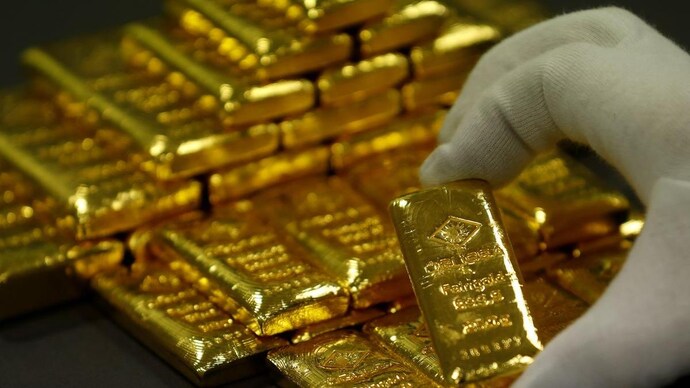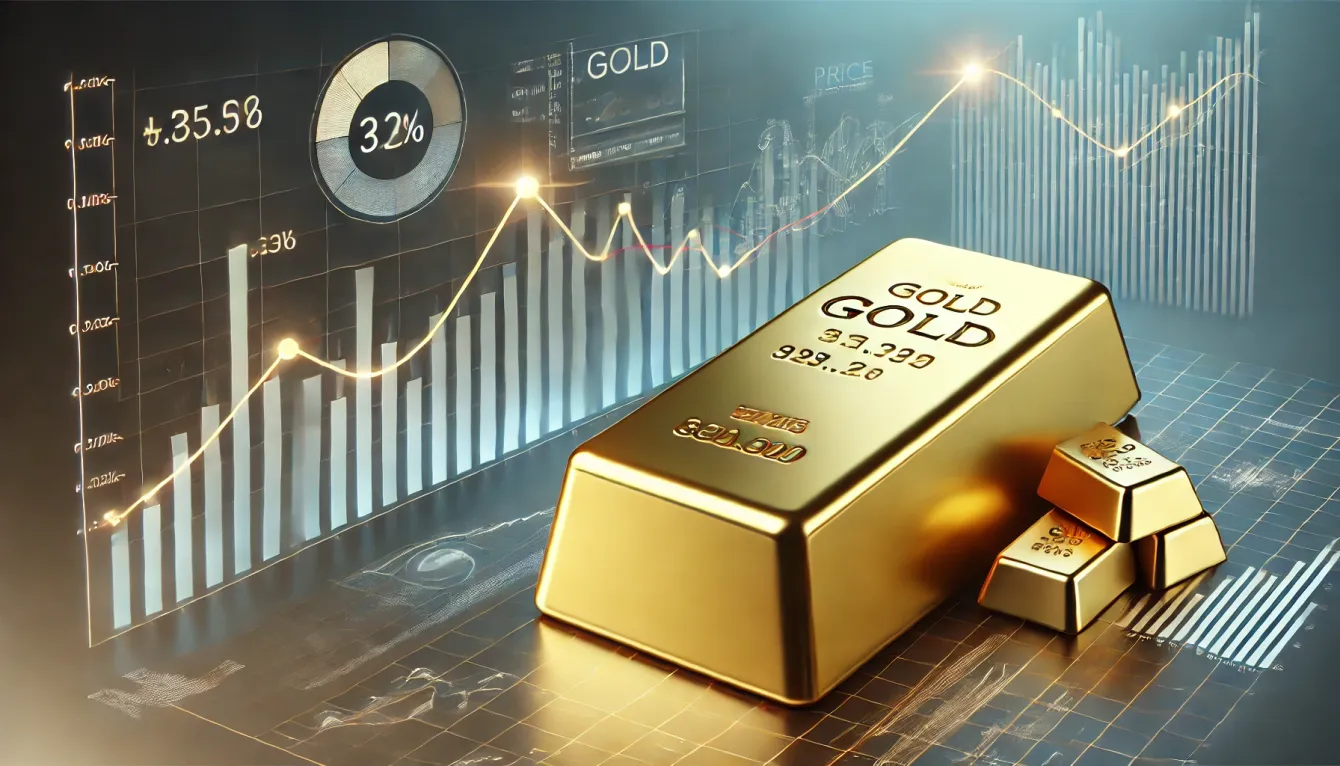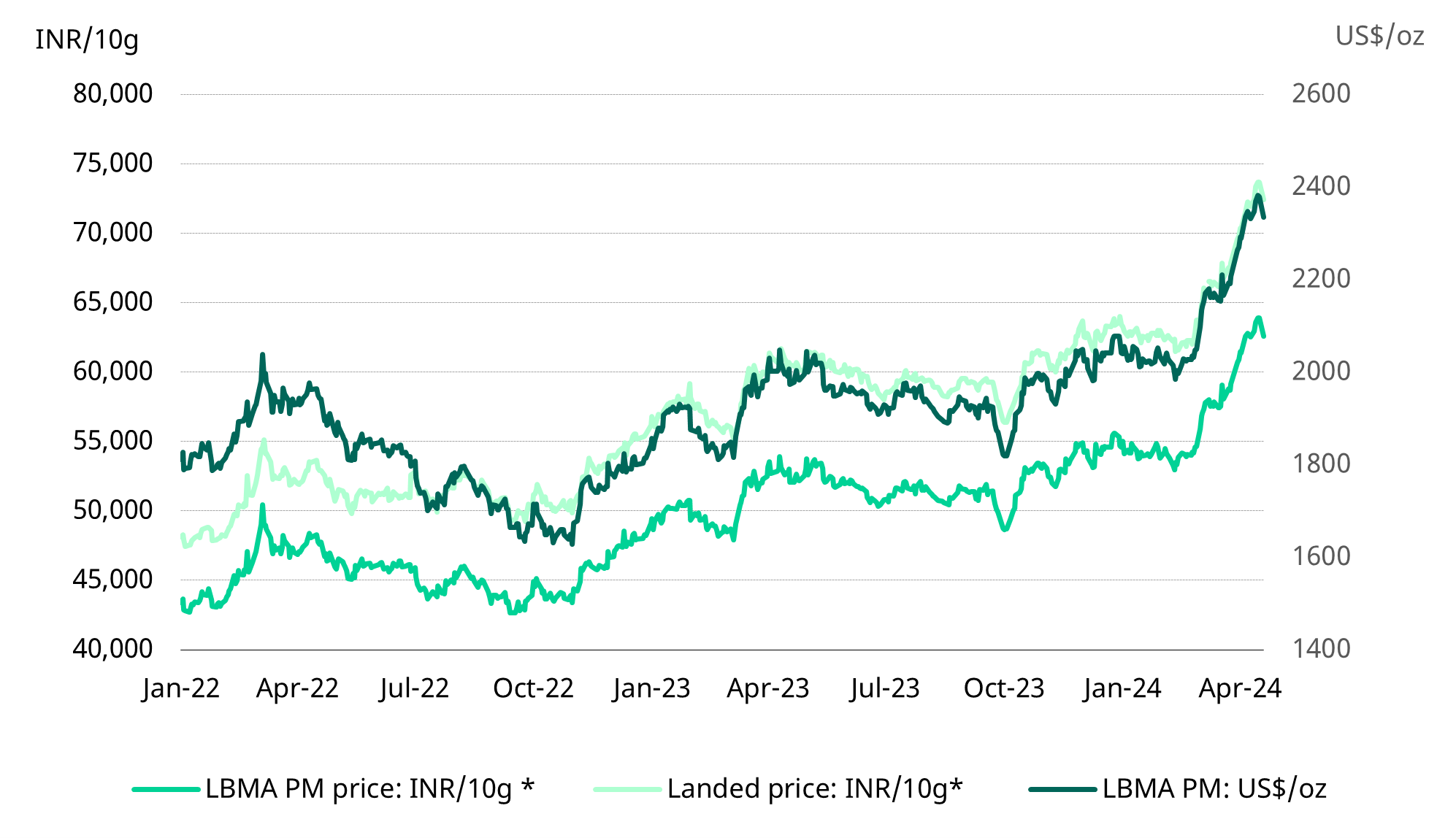Why Gold Prices Touched a Lifetime High of £76,400 for 10 Grams? How Will It Impact Investors?
As of September 2024, gold has remained at a lifetime high. The gold is trading now at an international level of $2,685.42 per ounce, and in India, the price has touched ₹75,750 per 10 grams. It is being seen as a monumental rise from previous years. The price has jumped by about 30% this year. Such is the reality about gold futures for October on the Multi Commodity Exchange in India, which is now at a new all-time high - Rs76,000 per 10 grams. These figures make this commodity the costliest gold ever, but what fuels this steep climb?

After all, for centuries, gold has been considered a precious metal. Glorified for its magnificence, it is an article possessing scarcity and, what’s more, a reliable means of storing one’s wealth. Recently, gold broke all previous highs and reached record-breaking prices; £76,400 for 10 grams in India. Such a record-breaking price of gold has surprised many investors and experts because of its very high increase over the previous levels.
A result of several reasons, such as changes in global financial policies, military and other conflicts around the world, and all actions of the central banks, led to the record-breaking price of gold. We shall outline these reasons in easy words so that you can understand why gold has ever been priced more than it is today.
Current Scenario of Gold Price
As of September 2024, gold touched a new all-time high. The global price of gold reached its highest record at $2,685.42 per ounce, and the Indian price reached ₹75,750 for 10 grams. Gold futures contract on India’s Multi Commodity Exchange, or MCX, for October has even touched Rs 76,000 per 10 grams. Naturally, it is near a record high as gold prices have gained around 30 percent merely in the past one year. So why is it happening?
Interest Rate Cuts by the US Federal Reserve
One of the main reasons why the price of gold has increased is because of a 50 basis point slash in interest rates imposed by the US Federal Reserve, also known as Fed. They cut interest rates from 4.75% to 5%, which at first glance does not seem much, but it is incredibly influential on the world economy and the price of gold.
Here’s how that works- When the dollar is weak, as a rule, the US dollar and gold are always opposite each other. As the dollar is losing its strength, investors look around for better money places; one safe place will be gold. The Fed does this by cutting the interest rates, which makes the dollar less appealing to investors. And this will push more people to buy gold, which in turn increases the price of it.
They even anticipate that the Federal Reserve can cut interest rates further at the end of the year. It would push gold prices to higher levels if that is the case.
Geopolitical Tensions
The rising gold prices owe much to the recent geopolitical tensions that prevail in various parts of the globe. There are two important conflicts that currently dominate the uncertainty; they include the war between Russia and Ukraine and the skirmish between Israel and Hezbollah.
Russia-Ukraine Conflict
The war between Russia and Ukraine has been in the field of conflict for over one year with no end in sight. The conflict has come along with so much economic instability especially in Europe. Investors are fully convinced that this war might destabilise the global economy, hence buying gold as a way of preserving their wealth.
Israel-Hezbollah Conflict

The once-rising tensions between Israel and Hezbollah militant group in the Middle East-gone live and active recently. Of all regions in this world, this is quite crucial to the economy due to its oil production. Conflicts in this region boost uncertainty or distrust in global markets and send more investors seeking refuge in gold.
During uncertain or unstable periods, people usually invest in gold since it is believed to retain its value better compared to other available assets. It is also at such times that the value dawns upon gold, considering that these wars occur perpetually.
Central banks have been purchasing more gold
A central bank, in general, is responsible for issuing and managing a country’s currency and financial system. What seems to be happening in many central banks of this world is that in recent months, the gold reserve there has been raised. That can be said to be part of a strategy called de-dollarisation.
What is De-dollarisation?
De-dollarisation refers to the reduction in dependence on the dollar in international trade and finance. Over several decades, the US dollar has become the main currency for global markets. However, the countries are gradually looking elsewhere from their dependency on the dollar. One way through which they have gone about de-dollarising their economies is by increasing their purchase of gold.
Gold has been viewed as a secure and reliable store of value, risk-free of being tied to the currency of any particular nation. The more gold in reserve, the less central banks can claim to be victims of risks associated with the US dollar.
For example, whenever the US suspended relations with Russia following the latter’s invasion of Ukraine, several countries began to fear reprisals from the US if they opposed US policies. This has resulted in a trend whereby the central banks are purchasing more gold to guard their economies.
The more gold a central bank buys, the more its price rises. This increased demand from the central banks is the other reason why gold prices have been rising.
Gold as an Anticipation of Inflation
Another key reason why the price of gold rises is because of inflation. Inflation is when the cost of any goods or services raises their prices, with the money that one has not gone as far as it used to.
When inflation is on the rise, people prefer assets that can protect their wealth from losing value; gold is one such asset, as its value does not fall easily.
Inflation is a threat to the world today. Everyone buys gold to avoid losing their wealth because prices rise daily; this increases their demand. The rising demands for this gold, a precious commodity, will push it to a greater price.
Historical Trend in the Price of Gold

To understand why the price of gold is as high as it is today, it would help to consider the trend in how the price of gold has changed with time. Gold has, at all times, proven itself to be a good investment. For this reason, its price has risen and fallen over the years depending on what is happening in the world.
2011 High: In 2011, gold recorded unprecedented prices of around $1,900 per ounce. This actually came in the wake of the overall global financial crisis that deepened in 2008. Afraid of the likely outcome of the economy, people ended up investing in gold to safeguard their safe haven status.
Take the example of tracing after 2011. It would be very clear that after reaching that peak in pricing, the gold prices declined year on year with the different stages of recovery of the world economy. However, in 2019, it became very clear that after a few quiet years, there was an increase in gold prices due to the trade tension between China and the US.
Pandemic Surge
When the COVID-19 pandemic occurred in 2020, gold prices rose yet again. The uncertainty of the pandemic brought a new wave of instability into the global economy. Investors took refuge in gold. Gold prices reached almost an ounce of $2,100 by August 2020. They eased a little later but were at an all-time high.
Now, in 2024, the price of gold is at a new record high. These are grounds consistent with the previous motive, uncertainty in the global economy, geopolitical tensions, and concerns about inflation. That is not much different for gold.
The Future Price of Gold

Many think that the price of gold will skyrocket in the near future. The US Federal Reserve will most probably make more cuts in their interest rates, and most likely, that will make the dollar much weaker and gold much more golden for investors. And then, of course, if the war scenario in Russia, Ukraine, and the Middle East continues, demand should stay strong.
Some analysts have also predicted that the bullion price may reach $4,000 per ounce in the coming years. If that is what happens, the gold rates in India may easily soar to ₹1,10,000 for 10 grams. That may be a prediction, but it drives home the point that most gurus believe gold will surely be worth investing in and precious for the future.
How People Can Invest in Gold?
With gold prices going up to all-time highs, so to say, most people wonder if it’s time to invest in gold or not. Financial advisors have said that as part of a diversified portfolio of investments, one should not ignore gold. Here’s how you might go about investing in gold:
Physical Gold: The most antique method of investing in gold is through physical gold. This would mean buying gold bars, coins, or even jewellery. Investing in physical gold has one particular advantage: you’ll be holding actual gold in your hand, and it also has specific costs in terms of storage and insurance.
Gold Exchange-Traded Funds: It is a fund with gold as its underlying asset. Its introduction allows you to invest in gold and be relieved of the headache of storage of the same. It is one of the most efficient investments for gold, especially suitable for a lay investor who doesn’t want the headache of keeping physical gold.
Gold Futures: Gold futures are contracts whereby you buy or sell gold at a predetermined price on some other date in the future. Such contracts happen to be a bet on the future prices of gold, though investing in futures can turn out to be risky because the price of gold may move against your expectations and may start rising instead of falling.
And then there are Gold Stocks, wherein one invests in the stocks of gold mining or production companies. They are likely to move with the price of gold but carry additional risks that depend on the performance of the company.
According to financial advisers, gold investment should generally constitute about 10 to 15 percent of a portfolio, providing a kind of haven against inflation or uncertainty in the economy but not an investment in itself.
Why Would Anyone Choose Gold As a Safe Investment?
The metal has been used as money and a store of value for thousands of years. Paper currencies can go down in value because of inflation or policy changes, but never with the case of gold, which will hold its value. So that is why gold has been labelled a “safe haven.” People seek to buy gold when there is economic uncertainty or war, knowing that in any instance, people will want gold.
Gold is a tangible good; it’s something which you can actually touch, store, and accumulate. It doesn’t require an enterprise or state to sustain its value. That makes gold especially appealing when people are not confident in the stability of the currency or financial environment.
A combination of factors underpin the record price of gold. The interest rate cuts from the US Federal Reserve have weakened the dollar and compelled investors to gold. The increasing tensions over the conflicts between Russia and Ukraine and Israel and Hezbollah have also fueled uncertainty, compelling even more people to buy gold as an insurance.
Global central banks have even started buying gold as part of a plan to reduce their dependence on the US dollar. As if these aspects weren’t enough, the long-time role gold has played as a hedge against inflation continues, making it an attractive investment.
As the prices of gold keep going up, investors will continue to channel their focus toward this precious metal as part of their overall portfolios. Though expensive, its value as an asset, particularly a stable and reliable one in uncertain times, guarantees that gold will go on to play an essential role in the global economy.




